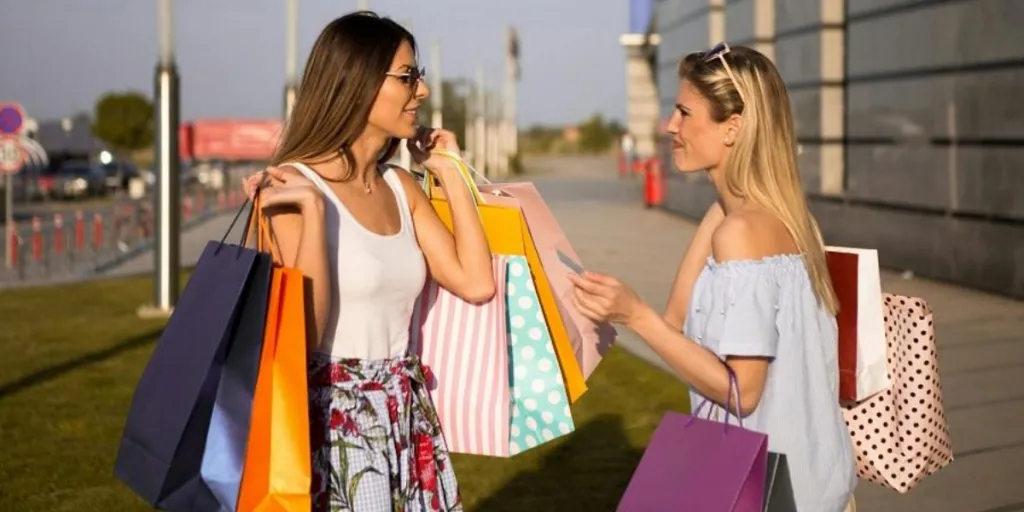When one is heading out for a shopping trip, regardless of how brief the trip is or how scanty the items are, a shopping bag always proves useful for carrying items. Much like any commercial product, despite the ubiquity of shopping bags today, there’s always room for customization, whether for branding, functional, or aesthetic purposes.
Read on to explore the reasons behind shopping bag customization, and discover inspiring ideas for customizing shopping bags that stand out this year.
Table of Contents
1. Why customize shopping bags?
2. Worldwide market for shopping bags
3. Inspiring ideas for shopping bag customization
4. Branding-focused, experience-centric customization
Why customize shopping bags?
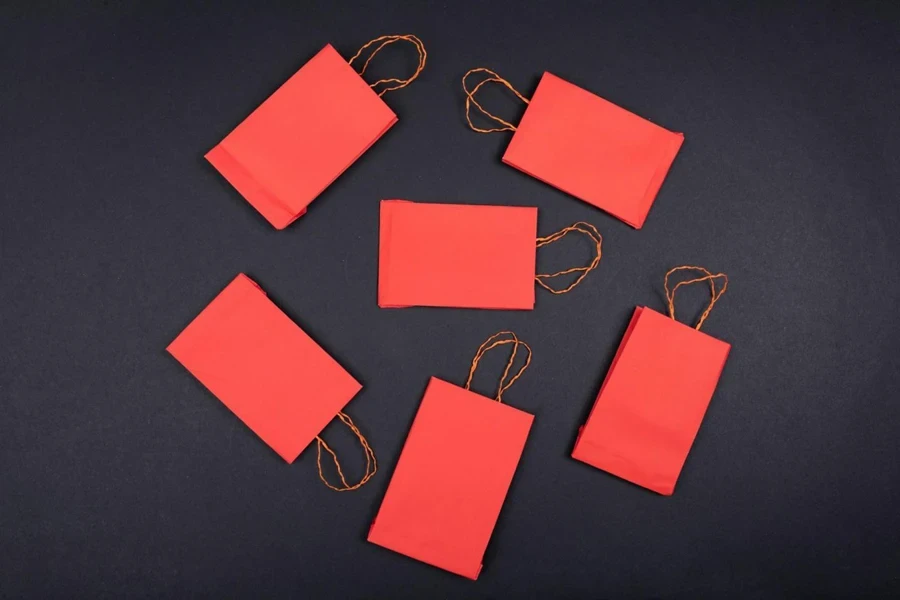
In the competitive landscape of retail, customized shopping bags serve more than just carriers but often as a branding instrument that businesses can leverage to amplify their presence and forge longer, deeper relationships with customers. Their significance includes:
- Brand amplification: Custom shopping bags act as a savvy investment in passive advertising. The distinctiveness and practicality of a bag’s design can significantly boost brand recall and the brand’s reach extends far beyond the storefront, as customers carry the company logo around, transforming everywhere they go into a marketing avenue.
- Elevating customer experience: Thoughtfully designed shopping bags serve as a testament to a business’s attention to detail and customer care, aiding in shaping an unforgettable shopping experience and a lasting impression. They enhance the tactile experience, making customers feel appreciated and further encouraging brand loyalty. This tangible expression of value can convert casual shoppers into brand advocates.
- Promotional versatility: Custom tote bags shine in promotional contexts. Whether it’s a company or product launch, a trade show, or an event, a customized shopping bag can carry a brand’s message to a wide audience. Those with pragmatic designs ensure their repeated usage, each time serving as a subtle yet powerful promotional message.
- Commitment to sustainability: In an era where environmental issues are paramount, eco-conscious bags stand as a testament to a brand’s dedication to green stewardship. Opting for sustainable materials and designs not only benefits the planet but also aligns the brand with the ethical values of its clientele, boosting confidence and brand loyalty.
- Fashion and retail synergy: In sectors where design is strongly emphasized, such as fashion and retail, well-designed custom reusable shopping bags have the power to ascend from mere packaging to coveted items. As such, some can be positioned as merchandise or even a designer shopping bag, adding a layer of exclusivity and desirability to the brand’s offerings while also serving as a brand-new revenue avenue for the sellers.
Worldwide market for shopping bags
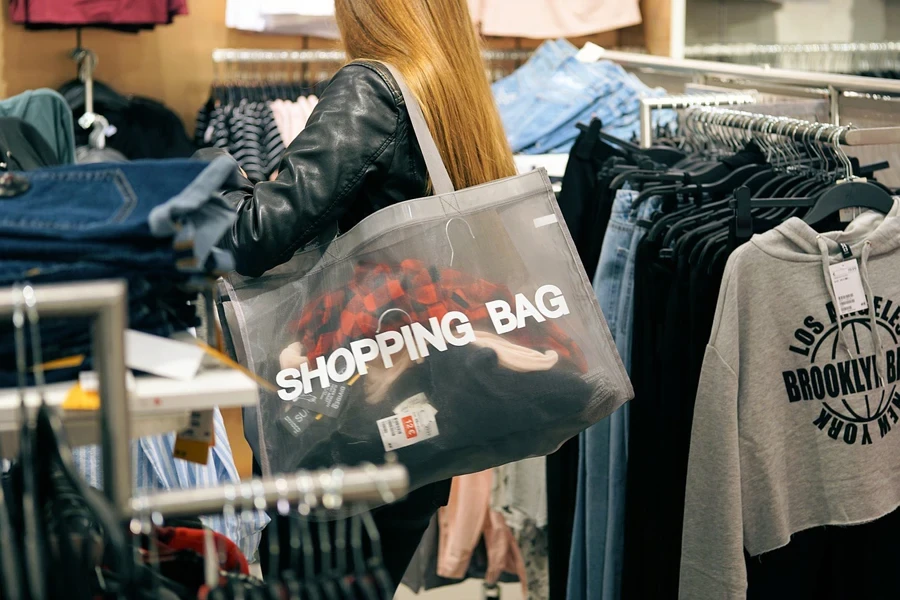
The worldwide market for shopping bags, estimated at US$ 11.9 million in 2021 and US$ 12.59 million in 2022, is expected to rise to US$ 19.77 million by 2030. This increase represents a projected compound annual growth rate (CAGR) of 5.80% during the forecast period from 2023 to 2030.
Reusable shopping bags, in particular, have emerged as the fastest-growing and largest segment, in stark contrast to the declining market share of non-reusable shopping bags observed since 2021. This shift aligns with worldwide movements to phase out the once indispensable single-use plastic shopping bags, which have been either officially banned or subjected to additional charges at the point of sale in stores or supermarkets in many countries.
Data from the United Nations, as of July 2018, indicates that 127 out of 192 reviewed countries had implemented regulations on plastic bags, with approximately 83 countries enforcing a ban on the free distribution of retail plastic bags.
These measures have significantly driven the growth of the shopping bag market. With the discontinuation of freely distributed single-use bags in retail stores, people are now prompted to bring their own shopping bags or, alternatively, incur additional costs for disposable bags with each shopping trip—a typically less favored option especially for the cost-conscious shoppers.
Inspiring ideas for shopping bag customization
Green innovation
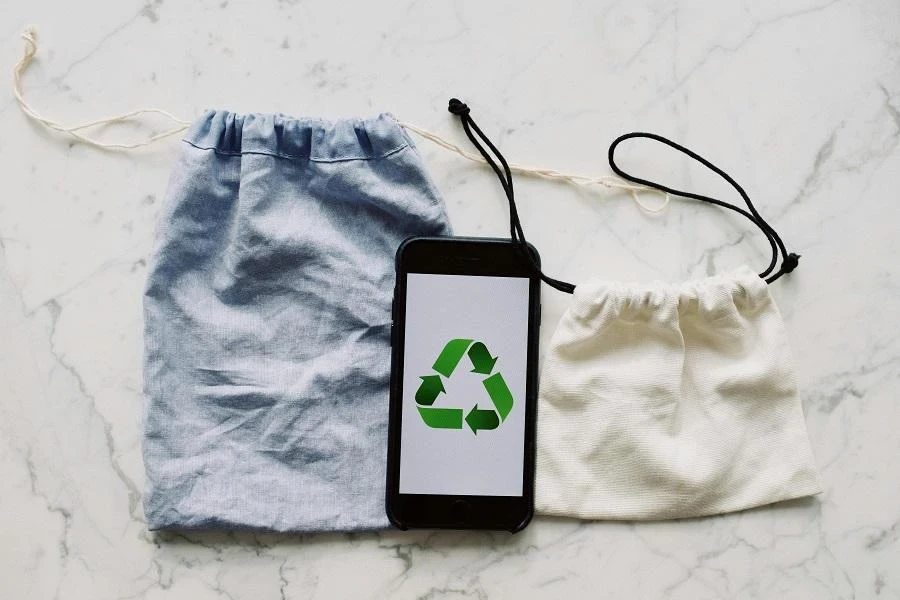
Incorporating biodegradable materials, recycled, and upcycled content, as well as innovative designs that minimize environmental impact represents the forefront of shopping bag customization. Such green innovations not only meet consumer demand for sustainability but also position the brand as a responsible participant in worldwide environmental efforts.
Among all the recyclable and reusable tote bag materials, paper-based materials are notably preferred, garnering the most attention. Not only does research show that paper shopping bags have gained the most dominant market share, but papers are also unanimously recognized by consumers as the better material for the environment. Specifically, 65% of South African consumers and 59% of U.S. consumers believe that paper/cardboard packaging is home-compostable, and 42% of South African consumers and 43% of U.S. consumers reckon that papers are easier to recycle.
In reality, with a promising CAGR of 3.9% and revenue forecast reaching up to US$ 7.5 billion, Kraft paper shopping bags have proven to be a classic recyclable choice. The compatibility of paper with high-quality printing processes further cements its status as a prime choice for luxury and boutique brands seeking distinctive customization.
Besides paper bags, reusable fabric shopping bags made from cotton, jute, hemp, and canvas offer durability and reusability, ideal for long-term branding investments. They resonate with eco-conscious consumers for their longevity and sustainability.
In addition to material selection, designs that align with brand identity can accentuate the theme of sustainability. This can be achieved by incorporating natural designs, and concepts that underscore environmental consciousness. Furthermore, integrating elements such as wildlife conservation themes, renewable energy illustrations, and narratives promoting eco-friendliness can also enhance the message of sustainability.
Personalized elevation
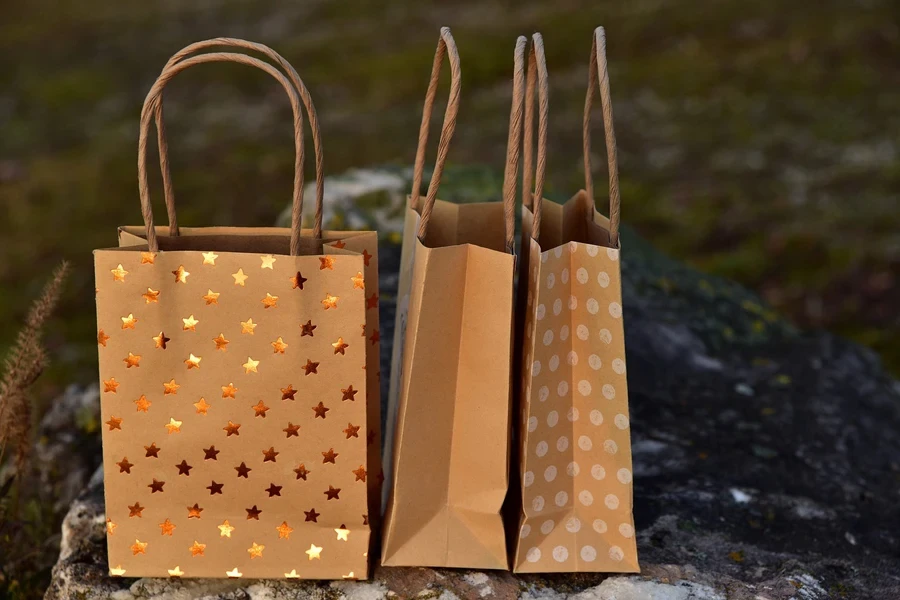
Personalized shopping bag ideas involve a strategy aimed at enhancing the customer experience by infusing designs, interactive elements, and personal touches that reflect a brand’s identity. Integrating elements that resonate on a personal level with consumers—from bespoke designs to digital engagement avenues—enables brands to significantly improve customer engagement and foster loyalty. This approach highlights the importance of establishing a personal connection through personalized shopping bags.
Personalization in packaging has traditionally been focused on digital printing technology, which is directly associated with the potential for lower costs even without large volume requirements. This permits greater creativity in design personalization. Digital printing on shopping bags now leads personalized printing efforts, offering the capability to transform selected artwork or photographs into distinctive, printable tote bags directly. This technique opens up extensive customization possibilities, as the versatility of digital printing is capable of generating everything from straightforward designs to complex patterns.
Moreover, with the advancement of interactive designs, the utilization of interactive elements like QR codes for digital engagement can now ensure that each bag carries a unique appeal, capable of delivering bespoke designs that cater to specific demographics or target audiences. The evolution of Augmented Reality (AR) technology further amplifies the appeal and interactive enjoyment of shopping bag experiences. Through the inventive application of AR codes, customization for diverse target groups becomes feasible, even in bulk orders.

Such a process is streamlined through the use of systematically arranged QR codes linked to various AR experiences, enabling each set of shopping bags to introduce a unique set of QR codes. These codes are strategically crafted to deliver diverse user experiences aligned with the objectives of specific campaigns.
To give a perspective on just how well-received AR is in aiding the retail industry, Shopify cited a 2019 Google survey which found that two-thirds (66%) of consumers are interested in using AR to inform their purchasing decisions. Additionally, it is projected that by 2025, about 75% of the global population and almost all smartphone users will frequently utilize AR technology.
The effectiveness of personalized AR experiences, however, is highly dependent on the creativity of the content and the seamless integration of the technology. This innovative approach essentially not only aims to enhance customer interaction with the brand but also to gather valuable data based on user engagement with the AR content.
Overall, personalization in shopping bag design is about creating a deeper connection with customers through a combination of digital printing, custom artwork, and innovative interactive elements like QR and AR codes. These features, leading to online content or special promotions, illustrate how technological advancements have significantly enriched the customization process for shopping bags.
Timeless reinvented
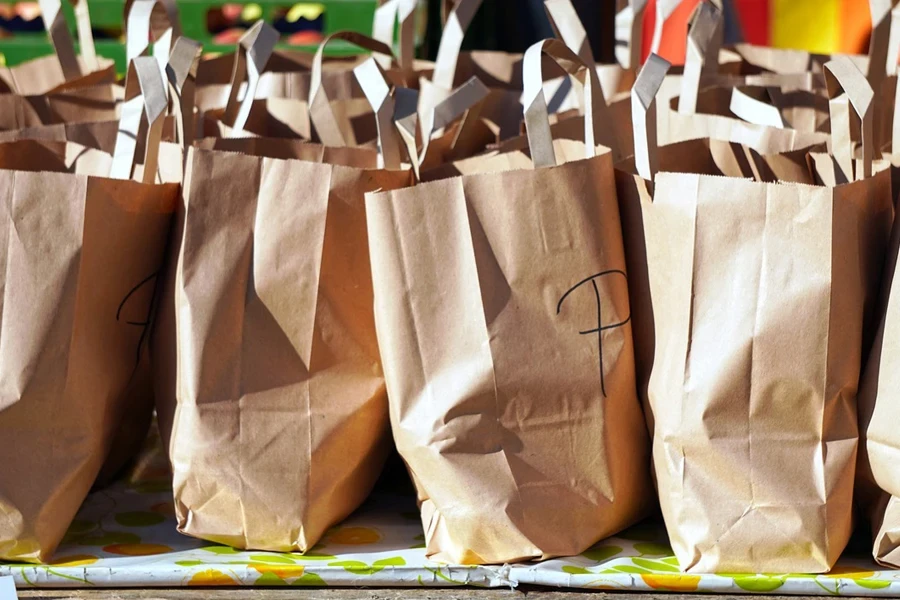
Reflecting on prior discussions showcasing the popularity of sustainable and interactively personalized shopping bags, it is time to consider blending classic designs with either sustainable materials or concepts or incorporating a high degree of personalization. This approach not only honors traditional values but also meets contemporary demands. Such synergy aims to ensure the enduring relevance and appeal of shopping bags resonate across a broad spectrum of generations, preferences, and lifestyles.
The allure of classic designs can be revitalized with these contemporary updates. This may involve incorporating contemporary graphic designs into a classic shopping bag or reimagining the bag’s structure and functionality to meet the current customization needs of consumers.
More specifically, timeless customization ideas such as minimalist shopping bags or shopping bags with neutral palettes are some of the classic designs that can be innovatively tailored with sustainability in mind, whether through conceptual design, material selection, —or both.
Whether it’s the simplicity and clarity of minimalist designs or the sophistication of neutral palettes, such as earth tones and other subdued colors, these timeless designs naturally align with eco-friendly messages aptly and seamlessly. With subtle modifications, these understated and neutral colors can perfectly complement any eco-conscious theme and ethos.
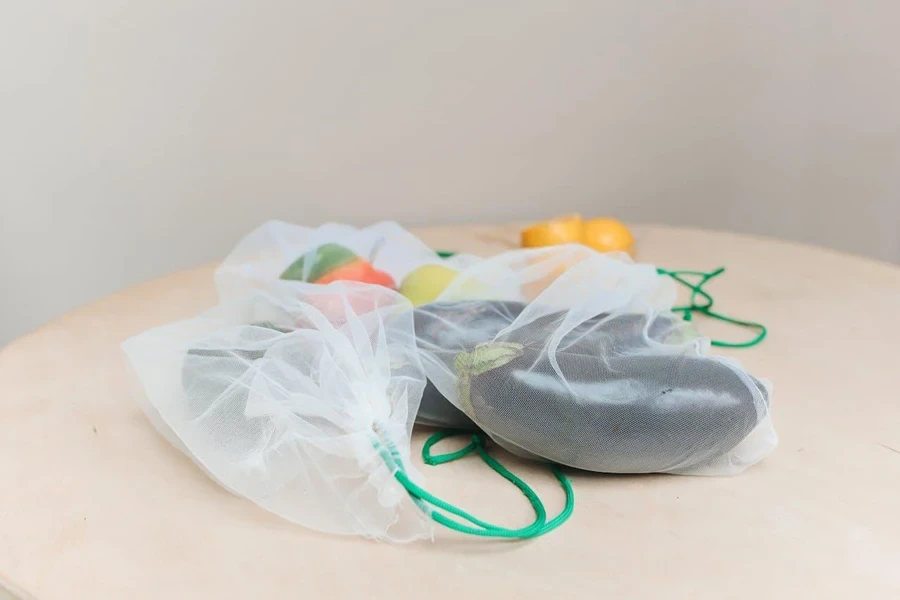
On the other hand, certain timeless shopping bag designs can excellently reflect and amplify consumers’ distinctive personas, in view of their unique characteristics and predilections. Classic monochrome designs in black, white, or shades of gray, for example, offer an ageless aesthetic that blends well with any brand image or personal flair.
Similarly, high-quality or luxury shopping bags that highlight superior materials and craftsmanship not only promise longevity but also an excellent personalization opportunity for those who value excellence and prioritize quality over cost, presenting them as optimal choices for individuals with discerning tastes and refined preferences.
In essence, these classical shopping bag concepts provide a flexible base for incorporating sustainability or customized personalization, due to their inherent ability to seamlessly merge with various styles. Their low-profile nature that complements other trends rather than overshadows them further guarantees their lasting presence in the marketplace.
Branding-focused, experience-centric customization
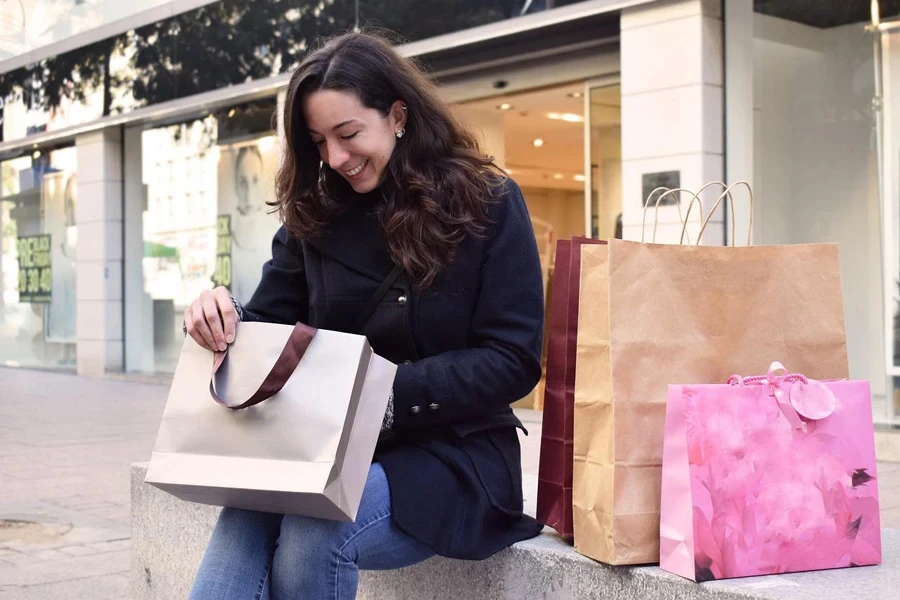
The concept of the branding-focused, experience-centric type of shopping bag customizations not only serves as a strategic tool for brand amplification but also as a means to elevate the customer experience. By integrating aspects such as promotional versatility and a commitment to sustainability into shopping bag designs, businesses can significantly enhance their visibility and appeal. This approach also aligns with the synergy between fashion and retail, where the aesthetic appeal of customization plays a crucial role in brand identity.
Against the backdrop of increasing environmental awareness and regulatory measures to curb plastic use, the demand for shopping bags that feature sustainable innovation and personalization is on the rise. This shift towards sustainability highlights the importance of creative ideas in personalized customization. To stay ahead in a competitive market while promoting environmental responsibility, businesses can adopt strategies that blend sustainable innovation with timeless design to forge stronger connections with their audience.
For further inspiration, the latest industry trends and insights, as well as business updates on innovative customizations, visit Alibaba.com Reads often for exclusive ideas and the latest wholesale information.
